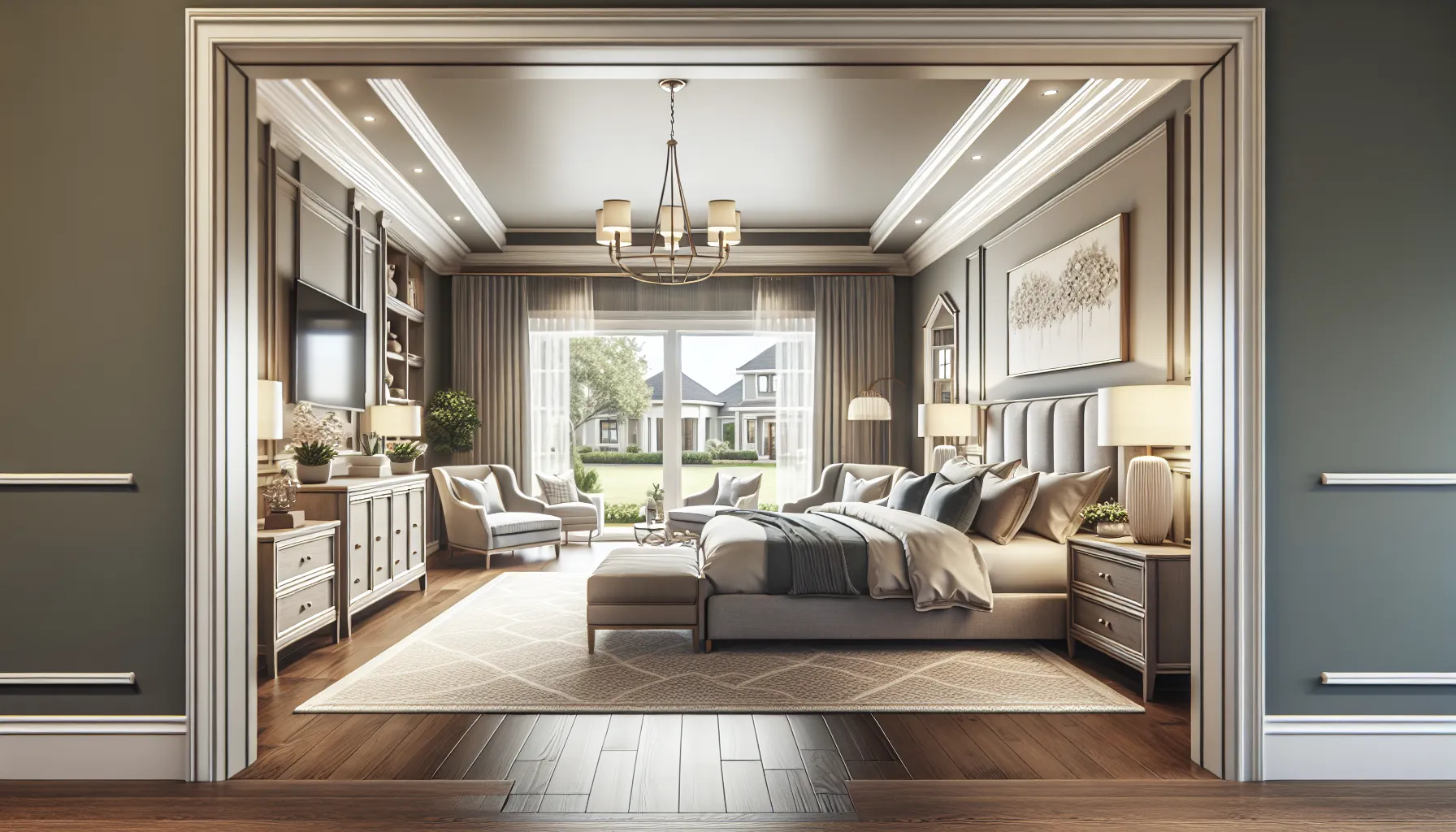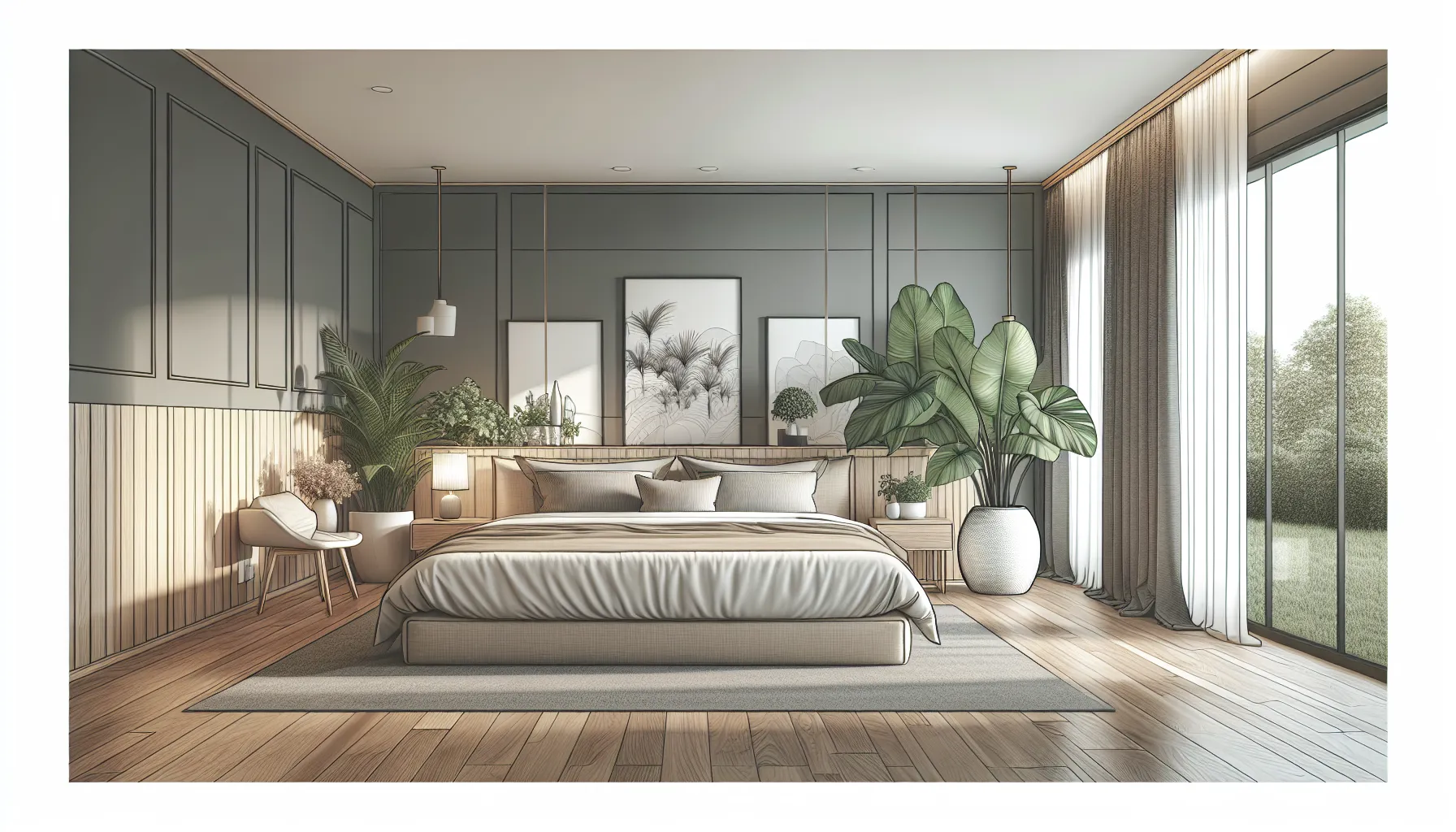Key Takeaways
- The term “master bedroom” originated in early 20th-century architectural design, reflecting household hierarchy and privacy demands of the time.
- Over decades, the meaning and features of the “master bedroom” evolved alongside cultural, societal, and architectural trends, leading to more comfort-focused and functional layouts.
- Increasing awareness around inclusivity and historical associations has sparked debates and prompted real estate professionals to reconsider the term’s appropriateness.
- Major real estate organizations and MLS platforms are transitioning to alternative terms like “primary bedroom” or “owner’s suite” to promote inclusivity and align with modern values.
- Language choices in listings now directly influence buyer perceptions, marketability, and compliance with evolving regulations, signaling a broader shift in the industry.
- Future trends point toward more adaptable home designs and continued evolution of terminology, emphasizing privacy, accessibility, and cultural sensitivity over tradition.
When we walk through homes or browse listings, the term “master bedroom” pops up everywhere. But have we ever stopped to wonder where this phrase comes from or why it’s still so common? The words we use to describe our living spaces carry stories and histories—sometimes more complex than we realize.
Let’s dig into how the term “master bedroom” took root in our culture, how its meaning has shifted over time, and why many in real estate are rethinking its use today. By understanding the evolution of this familiar phrase, we can see how language shapes the way we view our homes and ourselves.
Origins of the Term ‘Master Bedroom’
The phrase ‘master bedroom’ emerged as more than just a label for the largest bedroom in a home. It reflected deeper architectural, social, and cultural shifts across American housing markets.
Early Usage in Architectural Design
Architectural plans from the early 20th century introduced the ‘master bedroom’ to describe a designated suite for the primary homeowner. In builder catalogs from the 1920s and 1930s, the term often appeared alongside features like en-suite baths, separate closets, or private sitting areas. These elements set the ‘master’ space apart from secondary bedrooms, signaling both hierarchy and privacy. Builders relied on the distinction to market new homes to prospective buyers seeking status and convenience. Today, we recognize how those designations continue to influence floor plan terminology and expectations in property listings across the country.
Cultural Context and Influences
Social changes and evolving family structures influenced the adoption of ‘master bedroom’ in everyday language. During the postwar housing boom, the term gained popularity as suburban developments aimed to appeal to upwardly mobile households. The concept also reinforced prevailing gender roles, positioning the bedroom as the domain of the household’s head. As real estate professionals, we’ve watched these associations become points of discussion and sometimes discomfort for buyers and sellers, especially as the industry considers more inclusive alternatives. Before accepting or discarding traditional terms, it’s worth asking: does the language we use still serve the people living there, or has its cultural resonance shifted along with demographic trends?
The Evolution of the ‘Master Bedroom’ in Home Design

The ‘master bedroom’ has changed alongside broader shifts in how Americans view privacy, status, and the daily function of the home. Exploring its transformation helps us understand what buyers now value—and why home design keeps evolving.
Changes Through the 20th Century
Throughout the 20th century, the ‘master bedroom’ reflected changing lifestyles, family structures, and market expectations. Early in the century, blueprints for homes in cities like Chicago and New York often featured primary sleeping suites separated from children’s and servants’ rooms. These layouts signaled privacy and delineated authority in the household. After World War II, suburban expansion redefined the master bedroom as a larger, more private space for adult homeowners. Extra features, like attached bathrooms or walk-in closets, responded to consumer demand for comfort and exclusivity. Over the decades, we’ve watched regulations and building codes shift, marking clear differences between eras—for example, post-1970s energy crises prompted smaller room sizes and different window placements to boost efficiency. Considering these varied influences prompts us to ask: which home features truly deliver comfort, and which just signal status?
The Rise of Modern Floor Plans
Contemporary home designs approach the ‘master bedroom’ with function and inclusivity at the forefront. Open-concept layouts reduced formal separations, connecting sleeping areas to flexible living, work, and recreation spaces. Demographic shifts—multigenerational households, remote work, and changing family dynamics—encouraged architects to diversify bedroom options, sometimes replacing ‘master’ with ‘primary’ or ‘owner’s suite’ to create a more inclusive environment. Many newer properties feature dual suites, adaptable ensuite baths, or split-bedroom plans so residents can balance privacy and accessibility. Regulatory updates in states like California and New York, which require language sensitivity and non-discrimination in listing descriptions, also guide this shift in real estate vocabulary. As these trends reshape the market, we continue to weigh the value of tradition against the benefits of more inclusive, practical design.
Controversies and Shifting Perspectives

Debates around the term ‘master bedroom’ have intensified as both buyers and industry professionals reconsider how language shapes the home buying experience. Greater attention now focuses on whether our words accurately represent the diversity and changing needs of today’s households or unintentionally reinforce outdated norms.
Debate Over Language and Inclusivity
Conversations about the word ‘master’ often highlight concerns about inclusivity and historical context. Some trace the term’s lineage to hierarchical social structures and even connections to America’s history of enslavement, though evidence from architectural records remains limited. Several consumer groups and advocacy organizations—including the Houston Association of Realtors and the National Association of Real Estate Brokers—have called for alternative labels that reflect modern values. Terms like ‘primary bedroom’ or ‘owner’s suite’ now appear in real estate listings on Zillow, Redfin, and the Multiple Listing Service in markets such as New York and California. These changes prompt buyers and sellers alike to ask: Are we valuing tradition, or does updating terminology better reflect current realities within our communities?
When we reflect on these language shifts, it becomes clear that every term we use carries weight—sometimes consciously, sometimes not. Homes don’t just house families; they also hold beliefs and histories.
Industry Reactions and Name Changes
In direct response to changing public sentiment, major real estate boards and listing services have adopted updated vocabulary to stay in step with regulatory, legal, and ethical shifts. In 2020, the Houston Association of Realtors replaced ‘master bedroom’ and ‘master bathroom’ with ‘primary’ in over 40,000 listings and MLS entries, setting a precedent quickly followed in California, New York, and Illinois updates. Leading brokerages like Compass, Douglas Elliman, and Keller Williams now advise agents to use non-hierarchical language during showings and in marketing materials, striving for both accuracy and inclusion.
For sellers, label changes rarely alter the physical value of a property, but they shape perceptions and signal sensitivity to evolving consumer priorities. Buyers—especially in multigenerational or culturally diverse households—may feel more welcomed by inclusive descriptors. Regulatory compliance, MLS standards, and shifting client expectations all drive this evolution. The decision about which words appear on a listing or deed isn’t just about marketing—it reflects how we define privacy, ownership, and status inside the home, and invites us to consider how evolving language mirrors lasting change in the market.
What Does the Future Hold for the ‘Master Bedroom’?
Today’s shifting language around the ‘master bedroom’ signals broader change in how we describe home features and ownership. As architectural trends, buyer expectations, and regulatory guidance evolve, the terminology we use for these spaces shapes both our listings and our conversations about comfort and inclusivity.
Emerging Alternatives and Trends
Emerging alternatives to the ‘master bedroom’—such as ‘primary suite,’ ‘owner’s suite,’ and even ‘main bedroom’—increasingly define real estate marketing and property descriptions. Leading U.S. Multiple Listing Services and national brokerages now adopt these terms to address concerns over outdated or exclusionary language. For example, the Houston Association of Realtors transitioned to ‘primary bedroom’ across its platforms in 2020, reflecting a response to public sentiment and advocacy group feedback. We also see some architects designing home layouts without a single dominant suite, instead offering flexible living spaces to accommodate multigenerational households or changing needs. If state regulations or buyer expectations become more uniform, expect streamlined terminology and floor plans that prioritize adaptability over hierarchy. Are these changes pushing us closer to a standard that puts privacy and accessibility above tradition?
Impact on Real Estate and Marketing
Language change in real estate directly affects how homes are marketed, searched for, and perceived by buyers. Listings using ‘primary’ or ‘owner’s’ instead of ‘master’ often lead to smoother transactions by avoiding terms with difficult or controversial histories. According to Zillow and Redfin, searches for ‘primary suite’ are increasing, with buyers responding positively to inclusive, descriptive language. Marketing adaptation doesn’t just reduce friction during listings—it can also build trust, especially among diverse or younger demographics who may value sensitivity and equity. Some brokerages now update online templates, signage, and disclosure forms to reflect the new vocabulary, creating consistency across digital and print materials. As the market continues evolving, how we describe spaces—whether for privacy, resale value, or regulatory compliance—becomes a practical question with real effects on trust and buyer experience. How might this shift change the features we highlight and the stories we tell about what makes a home truly welcoming?
Conclusion

As we rethink the language we use in real estate, it’s clear that the terms we choose carry real weight. Our words shape how people feel about their homes and influence the buying experience for everyone involved.
By embracing more inclusive and accurate descriptions, we’re not just keeping up with trends—we’re creating spaces that reflect the values and needs of today’s homeowners. The evolution of the “master bedroom” is just one example of how our industry—and our society—continues to grow and adapt.
Frequently Asked Questions
What is the origin of the term “master bedroom”?
The term “master bedroom” originated in early 20th-century American architectural plans to describe the primary suite for the homeowner. This room typically featured its own bathroom and separate closets, reflecting privacy, hierarchy, and luxury within a home.
Why is the term “master bedroom” considered controversial today?
“Master bedroom” is considered controversial due to its associations with historical hierarchy and connections to America’s history of enslavement. Some industry professionals and buyers believe the term is outdated and not inclusive of modern values and diverse household structures.
What terms are being used instead of “master bedroom”?
Alternative terms like “primary bedroom,” “owner’s suite,” and “main bedroom” are increasingly used in real estate. These terms aim to foster inclusivity and better reflect current consumer values and diverse family arrangements.
How have bedroom designs changed over time in American homes?
Bedroom designs have evolved from emphasizing hierarchy and privacy to prioritizing comfort, functionality, and inclusivity. Modern trends now include open-concept layouts, attached bathrooms, walk-in closets, and spaces suitable for remote work or multigenerational living.
Are real estate professionals required to use the new terms?
Some real estate boards and Multiple Listing Services, particularly in states like California and New York, have updated their policies to encourage or require inclusive language, such as using “primary bedroom” instead of “master bedroom” in listings.
Does changing the term affect home value or buyer experience?
Using inclusive, updated terminology can improve buyer experience by making listings more welcoming and appealing to diverse buyers. It may also positively impact resale value by aligning with modern preferences and regulatory trends.
Why does language matter in real estate descriptions?
Language in real estate shapes perceptions of privacy, ownership, and status within the home. Updating terminology reflects changing social values and can make home descriptions more accessible, inclusive, and attractive to a broader range of buyers.




